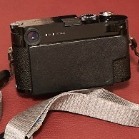Focussing
-
Recently Browsing 0 members
- No registered users viewing this page.
-
Similar Content
-
- 0 replies
- 204 views
-
- 11 replies
- 1,454 views
-
- 9 replies
- 1,313 views
-
- 8 replies
- 2,039 views
-
- 17 replies
- 1,530 views
-




Recommended Posts
Join the conversation
You can post now and register later. If you have an account, sign in now to post with your account.
Note: Your post will require moderator approval before it will be visible.